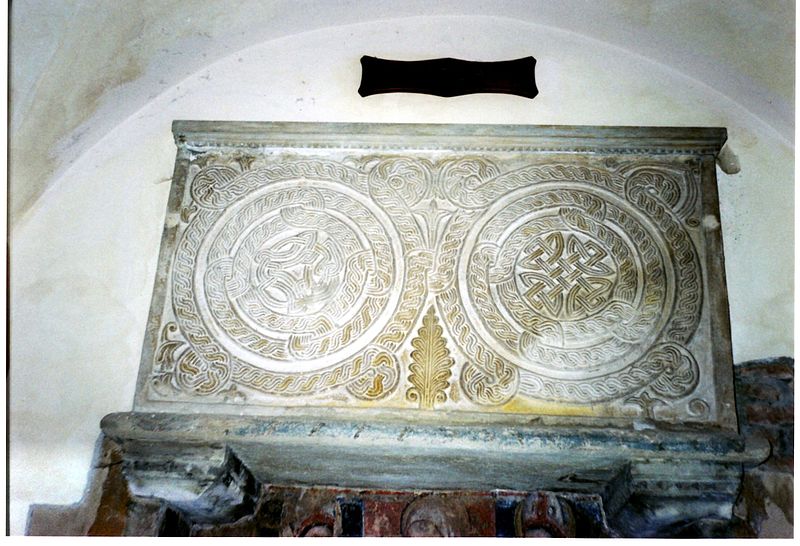|
Cumméne
Cumméne, also spelled Cuimín, Cummin, Cumin etc., is an early Irish name (Latinised as Cumianus or Cummianus, Anglicised Cumian or Cummian) and may refer to: * Cumméne Fota (d. 661/2), Irish abbot, bishop and theologian, author of a paschal letter * Cumméne Find (d. 669), also called Albus, hagiographer and abbot of Iona, attended the Synod of Whitby * Cumianus Cumianus ( 641 – 736) was an Irish monk who became abbot of San Colombano di Bobbio around 715. He left Ireland as an old man. The intricately carved lid of his sarcophagus, containing a lengthy epitaph, was made by one Master John and commis ... (d. c. 736), abbot of Bobbio * Cuimín of Kilcummin, locally venerated saint {{given name, hndis ... [...More Info...] [...Related Items...] OR: [Wikipedia] [Google] [Baidu] |
Cumméne Find
Cumméne Find (Latinised, Cummeneus Albus, Cumméne "the White", died 669) was the seventh abbot of Iona (657–669). He was the nephew of a previous abbot, Ségéne and great-nephew of Lasrén. It was during Cumméne's abbacy that the Northumbrians decided against adopting the Gaelic dating of Easter at the Synod of Whitby in 664, resulting in the loss of control of the Ionan offshoot Gaelic church at Lindisfarne. In 664, the last Gaelic abbot/bishop of Lindisfarne, Colmán, resigned his post and returned to Iona. It was during Cumméne's abbacy that the Book of Durrow was first produced, although this probably happened at Durrow itself, rather than Iona. Cumméne is known to have visited Ireland in 663, perhaps on a tour of daughter houses. He is known to have written a Vita of Columba, ''"De uirtutibus sancti Columbae'' ("On the Virtues of Saint Columba"). This text was then later inserted into the Schaffhausen manuscript of Adomnán Adomnán or Adamnán of Iona (, la, ... [...More Info...] [...Related Items...] OR: [Wikipedia] [Google] [Baidu] |
Cumméne Fota
Cumméne Fota or Fada, anglicised Cummian (''fl''. ''c''. 591 – 12 November 661 or 662), was an Irish bishop and ''fer léignid'' (lector) of ''Cluain Ferta Brénainn'' (Clonfert). He was an important theological writer in the early to mid 7th century. Life Cumméne Fota was son to Fiachna, king of West Munster. He early embraced a monastic state, and after some years was made abbot of Keltra, an isle in the lake Dergdarg, upon the river Shannon, sixteen miles from Limerick.Butler, Alban. "Saint Cumin, Bishop in Ireland". ''Lives of the Fathers, Martyrs, and Principal Saints'' 1866. CatholicSaints.Info. 26 July 2014 De controversia paschali He is famous for a |
Cumianus
Cumianus ( 641 – 736) was an Irish monk who became abbot of San Colombano di Bobbio around 715. He left Ireland as an old man. The intricately carved lid of his sarcophagus, containing a lengthy epitaph, was made by one Master John and commissioned by King Liutprand, King of the Lombards. The inscription on the tomb reads as follows; it is written in rhythmic hexameters, a kind of hexameter in which word accent is taken into account rather than syllable length:Thurneysen, R. (1887) ''Zeitschr. f. rom. Phil. XI.''; p. 316. : : : : : : : : : : : : : : : : :"Here lie the sacred limbs of Cumian; :whose soul, entering heaven, rejoices with the angels. :He was great in dignity, nobility, and beauty. :Ireland sent him as an old man to the lands of Italy: :located in Bobbio, constrained by love of the Lord, :where, by preserving the teaching of the venerable Columban, :keeping watch, fasting, tireless, constantly praying, :for four olympiads An olympiad ( el, Ὀλυμπιάς ... [...More Info...] [...Related Items...] OR: [Wikipedia] [Google] [Baidu] |
